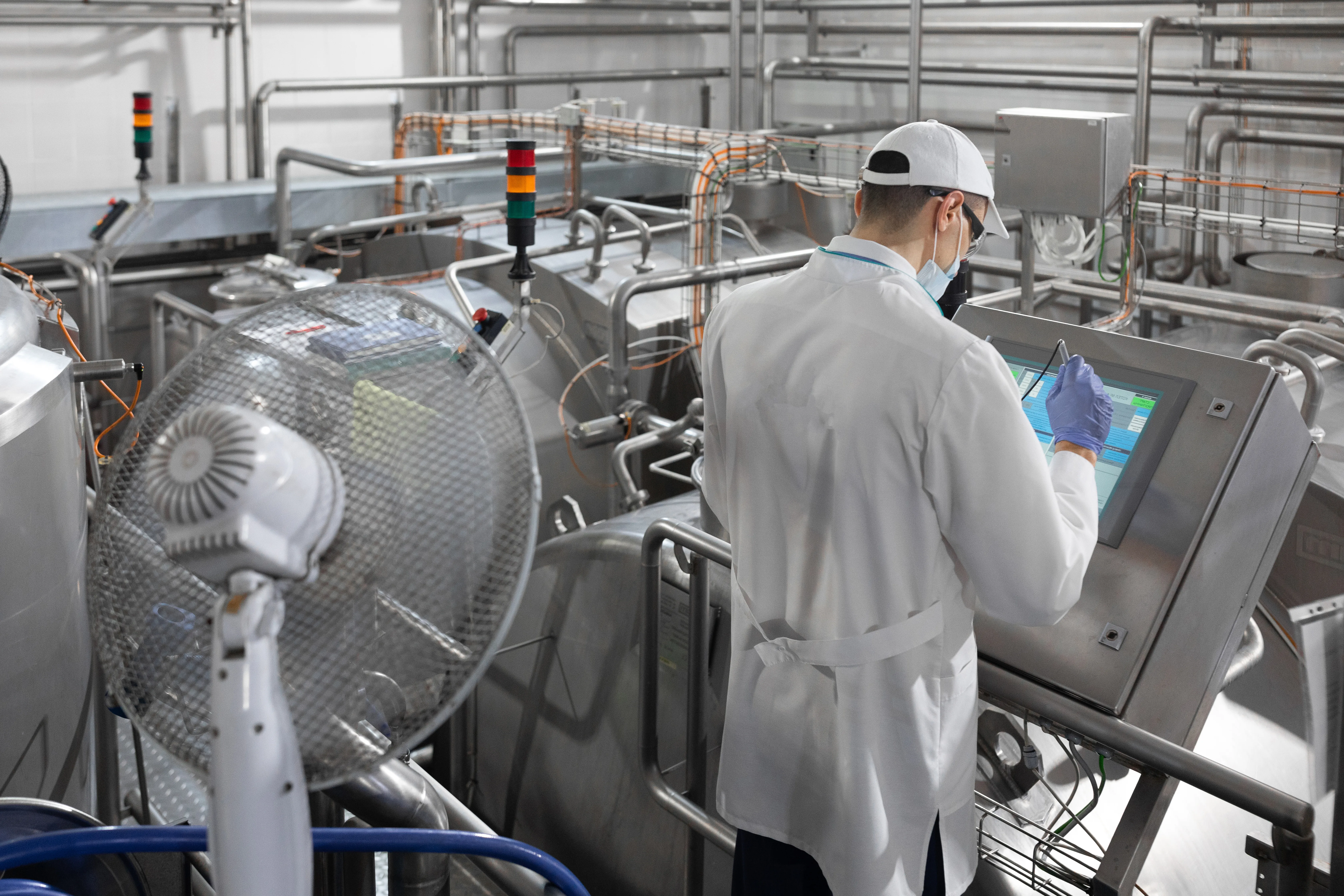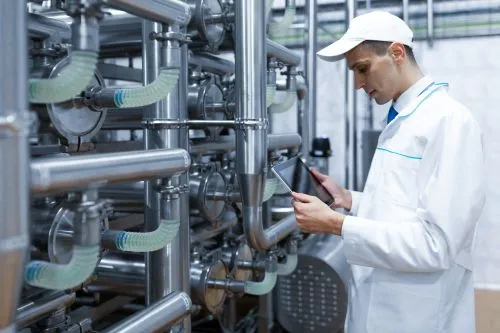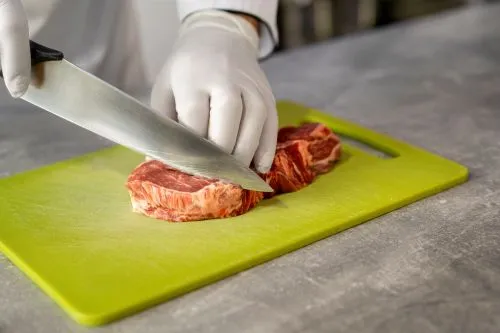1498

Academics claim that a newly developed starter culture could help mature cheeses like cheddar and gouda almost twice as fast, paving the way for more efficient and sustainable cheese production. "There are practically no disadvantages," said the lead researcher, as quoted by DairyReporter.
A Costly Endeavor
Cheese production is a costly and time-consuming endeavor, taking anywhere from several weeks to over a year to achieve the right flavor and texture properties.
Hard cheeses require longer aging times than soft varieties, which means managing space, temperature, and humidity comes into play. For instance, the cost of maturing cheddar has been estimated at around $640-1025 USD per ton of cheese aged for nine months, according to a 2003 study by Upadhyay and McSweeney.
Approaches to speeding up the maturation process vary, from raising the aging temperature to using genetically modified starter cultures or enzyme blends.
However, researchers at the Technical University of Denmark (DTU) claim they have developed a new strain of mesophilic bacteria that releases cheese-ripening enzymes faster and doesn't require the addition of adjunct cultures to facilitate faster maturation, making it both cost-effective and a time-efficient process that is entirely natural.
"There are solutions on the market to accelerate cheese ripening, but they all suffer from various disadvantages, e.g., high cost, the generation of unfavorable flavors, and can be difficult to use," explained Christian Solem, Associate Professor of Microbial Biotechnology and Biorefinery at the DTU National Food Institute.
"Storing large quantities of cheese in a ripening unit for months is also associated with high stock costs, similar to having money in the bank at a low or zero interest rate."
A Shortcut
The DTU solution—a new mesophilic starter culture—was tested on Danbo cheese, a semi-soft cheese similar to Emmental; the starter reduced the cheese's maturation time from 25 to 13 weeks. Danbo is a surface-ripened cheese, which means the microorganisms growing on its surface secrete maturing enzymes that determine the cheese's maturation.
The more microorganisms, the faster the maturation. During their experiment, DTU researchers cultivated these microorganisms on whey in a fermentation tank, creating what Solem called "a shortcut to faster cheese ripening."
Asked about the inner workings of mesophilic cultures—and why it typically takes so long for them to produce cheese-ripening enzymes—Solem explained, "Mesophilic cheese cultures are usually composed of a mix of Lactococcus lactis and Lactococcus cremoris bacteria, where the latter typically releases the ripening enzymes more efficiently," he said. "Lactococcus lactis is more heat-tolerant and produces acid more quickly, but it doesn't contribute much to taste, i.e., it doesn't release as many ripening enzymes. Our culture is a special Lactococcus lactis because it efficiently releases ripening enzymes. It's also cheaper and easier to grow for a culture supplier, making it more sustainable."
"It's quite controversial that a simple culture designed from scratch performs much better than commercially available cultures," he added.
Mesophilic cultures are typically used for maturing continental cheeses like gouda, cheddar, and edam, we were told. Solem said the academics haven't tested it yet, but their newly developed culture should be "perfect" for use in cheddar production, a cheese that requires the milk to be gently heated before adding the culture. The starter doesn't require any special equipment other than what is already used in dairy production, he added.
Another unique aspect of their culture is that it tolerates high temperatures much better than any mesophilic culture, he added, "and since cheese firmness is controlled by the so-called cooking step, where the cheese curd is heated—up to 39°C for cheeses made using mesophilic cultures and possibly over 50°C for cheeses made using thermophilic cultures—to remove whey."
In addition to accelerating the aging process of traditional hard cheeses, the culture could allow for the creation of extra-mature cheeses with an enhanced flavor. "Our culture tolerates 45°C and possibly higher temperatures, which opens up possibilities for new, firmer cheese variants with typical mesophilic flavors," confirmed Solem.
Eliminating Bitterness
There's also the potential to use this culture in low-fat cheese production. When tested in mild gouda, researchers found that the culture on its own eliminated the bitterness commonly associated with low-fat cheeses, which typically require the addition of adjunct cultures to improve flavor.
"Most young cheeses have a bitter flavor due to the proteolytic action of rennet and the starter culture, which can disappear during maturation," said Solem. "This bitterness can be eliminated more rapidly by adding adjunct cultures, e.g., Lactobacillus helveticus. When our culture was used, there was no need for an adjunct culture, which also reduced costs. Thus, the culture can be used for low-fat cheeses."
He added that for both types of cheese, "flavor development was highly accelerated," to the surprise of the dairy experts at the factory the academics collaborated with. "In the laboratory, we measured the release of free amino acids, which is also linked to ripening, and free amino acids accumulated more rapidly," said Solem.
Disadvantages?
Asked if there are any disadvantages to using this culture—in terms of cost or health and safety requirements—Associate Professor Solem added that the culture is cheaper and easier to cultivate and is an approved food natural, meaning there are no regulations or production obstacles to widespread adoption.
"In my opinion, there are really no disadvantages as I see it. In a world burning from global warming, more sustainable and resource-saving technologies are urgently needed for food production, and this technology is an example of that," he concluded.
Asked if there are any rival solutions with similar properties, Solem said, to the best of his knowledge, there is "nothing like it out there" and called some of the study's findings "controversial."
"It's quite controversial that a simple culture designed from scratch performs much better than commercially available cultures," he explained. "That a Lactococcus lactis culture performs better than a Lactococcus cremoris culture is also quite different from previous findings. We also find that autolysis—cell breakdown—is the limiting factor for ripening, where some researchers claim other parameters are important."
(Source: Acceleration of cheese ripening P.L.H. McSweeney, V.K. Upadhyay)





